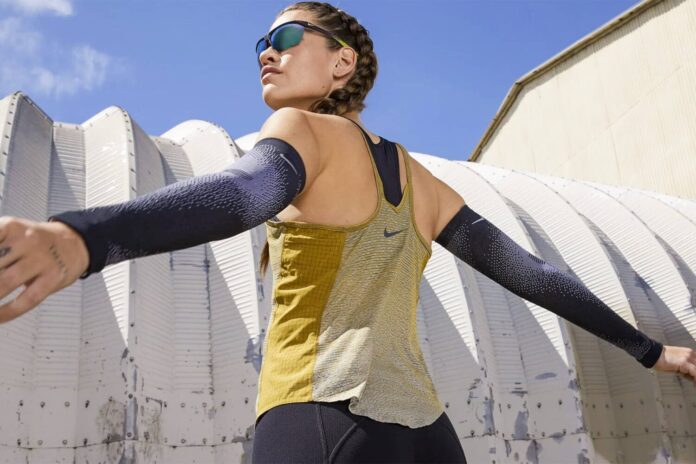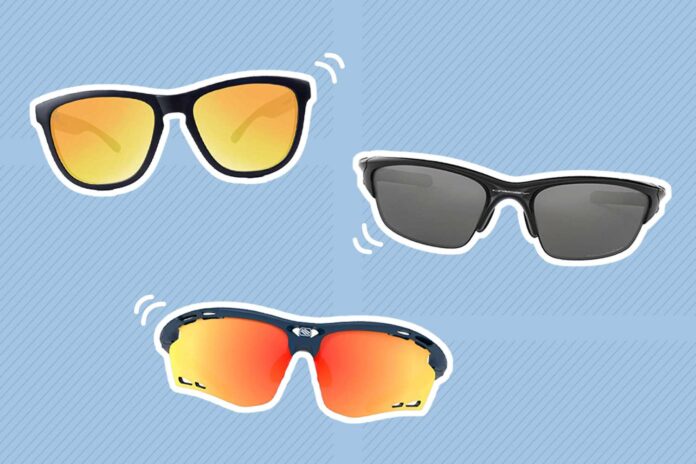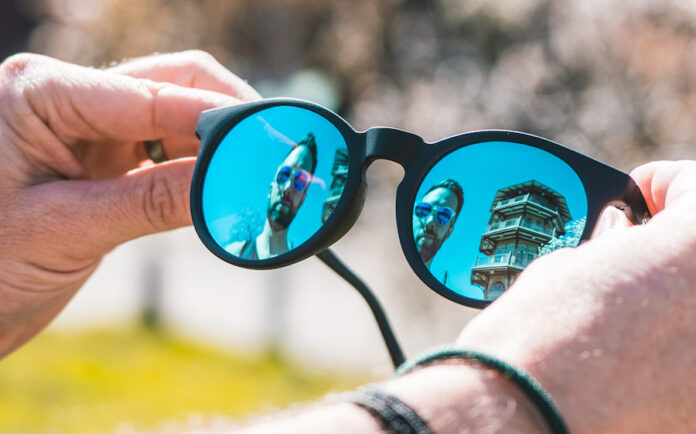Are you a runner searching for the ideal sunglasses to complement your workout? The appropriate pair of sunglasses can significantly impact efficiency and performance.
In this piece, we’ll discuss how to pick good running sunglasses and how the color of the lenses can affect your vision.
Why Do Runners Need Sunglasses?

Runners should wear sunglasses for more than looks. Good running sunglasses shield your eyes from dangerous ultraviolet (UV) rays, glare, and sudden shifts in lighting.
Wearing sunglasses with ultraviolet (UV) protection helps prevent long-term eye damage.
Cataracts, macular degeneration, and photokeratitis are some of the eye diseases brought about by prolonged exposure to the sun’s ultraviolet (UV) radiation.
Light levels fluctuate due to the shifting terrain and weather encountered throughout the run. Sunglasses with the right tint help you see clearly by increasing contrast and decreasing glare.
Your running will be safer and more pleasurable thanks to your enhanced ability to identify and avoid potential dangers quickly.
Color Sunglasses That Are Good for Running

The features of each lens color alter the way you see the world. Some common lens colors and the benefits they offer are as follows:
Gray/Neutral
Gray glasses are an excellent choice for runners since they preserve genuine color perception while lowering overall brightness. They are ideal for bright, sunny circumstances since they provide appropriate protection without distorting colors.
Brown/Amber
Amber lenses improve contrast and depth perception, making them excellent for use in various lighting circumstances. They perform well in partly overcast or hazy conditions because they increase the contrast of objects against the background.
Rose/Pink
Rose and pink lenses improve depth perception and are perfect for cloudy days. They improve visibility by increasing the contrast between items and a gray or green background.
Yellow/Orange
These lenses improve contrast and depth perception in low-light circumstances, making them ideal for early morning or nighttime runs.
They can improve visibility in foggy or hazy conditions, making it easier to notice possible hazards.
Remember that personal preference and the running environment determine your ideal lens color.
Experimenting with different hues can assist you in determining the best solution for your needs.
Additional Considerations for Running Sunglasses

Choosing the right pair of running sunglasses entails thinking about more than just the color of the lenses. You need to consider the following:
The Shade from the Sun: Sunglasses should block out 100 percent UV light to protect your eyes.
Polarization: Polarized lenses block reflected light, making them useful in water and snow. However, they might not be the best choice for all your running needs. That’s because they might obscure your vision on flat surfaces,
Anti-slip: Choose a snug pair of sunglasses that won’t fall off or bounce about while you’re out for a run. Choose glasses with lightweight frames and nose pads you can adjust for maximum comfort and distraction-free wear.
The Best Color Sunglasses for Running
In addition to protecting your eyes, the color of your sunglasses significantly impacts your running performance. The advantages of various lens colors and how they affect visual clarity and contrast will help you make a well-informed choice.
Selecting appropriate running sunglasses with adequate UV protection and the preferred lens color—neutral gray, amber, rose, or yellow—will improve your running experience and keep your eyes safe from harmful rays.
Find the best pair for you, and hit the pavement with unimpaired vision and a spring in your step!
When it comes to choosing the right gear for running, many athletes focus on the right shoes, apparel, and even technology to track their progress. However, one crucial aspect that is often overlooked is the color of glasses worn during runs. The color of glasses can play a significant role in enhancing a runner’s performance, comfort, and safety. Whether it’s shielding the eyes from harmful rays, improving visibility, or enhancing contrast, the right choice of lens color can make a world of difference for runners.
Protect your eyes

One of the primary reasons why the color of glasses is important for runners is its impact on protecting their eyes from the sun’s harmful UV rays. Prolonged exposure to ultraviolet radiation can lead to various eye conditions, including cataracts, macular degeneration, and photokeratitis. Running outdoors exposes athletes to a higher risk of UV exposure due to the intensity of sunlight, especially during peak hours. Sunglasses with lenses that have a built-in UV protection filter can act as a barrier, reducing the risk of eye damage and allowing runners to train comfortably and safely under the sun.
Beyond UV protection, lens color plays a crucial role in improving visibility and enhancing contrast during different lighting conditions. Runners often encounter varying terrains, weather conditions, and times of the day when training. The right lens color can optimize the visual experience, allowing them to see clearly and navigate obstacles more effectively. For instance, yellow or amber lenses are excellent for low-light conditions, such as early morning or late evening runs, as they enhance contrast and improve depth perception. On the other hand, darker lenses like gray or green are better suited for bright, sunny days, as they reduce overall brightness and glare, preventing eye strain.
Another important aspect related to the color of glasses is its influence on the psychological state of the runner. Colors can have a profound impact on mood and perception, which can indirectly affect performance. Research has shown that certain colors can evoke feelings of calmness, focus, or even excitement. For instance, blue-tinted lenses may induce a sense of calm and tranquility, while red-tinted lenses might increase energy levels and excitement. By choosing the appropriate color, runners can set the right tone for their workouts and maintain a positive mindset, leading to improved motivation and overall performance.
Safety Concerns

Safety is paramount for any runner, and the color of glasses can also contribute to this aspect. Different lens colors can affect how well a runner is seen by others, such as motorists or fellow athletes. For example, if running in low-light conditions, wearing glasses with reflective or high-visibility lenses can make a significant difference in ensuring others can spot the runner easily. This reduces the risk of accidents and enhances overall safety, especially when running in areas with heavy traffic or in dimly lit environments.
Furthermore, the color of glasses can also impact how well runners perceive their surroundings and judge distances. This is particularly relevant in trail running or cross-country events, where uneven terrain and varying obstacles can be challenging to navigate. Polarized lenses, for instance, can reduce glare and improve visual clarity, enabling runners to spot potential hazards like rocks, roots, or puddles more easily.
In conclusion, the color of glasses is a crucial consideration for runners looking to optimize their performance, comfort, and safety. By selecting the right lens color, athletes can protect their eyes from harmful UV rays, enhance visibility and contrast, influence their psychological state, and improve overall safety during their runs. It is essential for runners to choose glasses that not only suit their personal preferences but also cater to the specific lighting and environmental conditions they regularly encounter. With the right pair of glasses, runners can confidently focus on what they do best—hitting the road, track, or trail with passion and determination.





![Calgary’s Hottest Neighborhoods for Luxury Homebuyers [2024]](https://thewashingtonote.com/wp-content/uploads/2024/04/Calgary-324x160.png)



